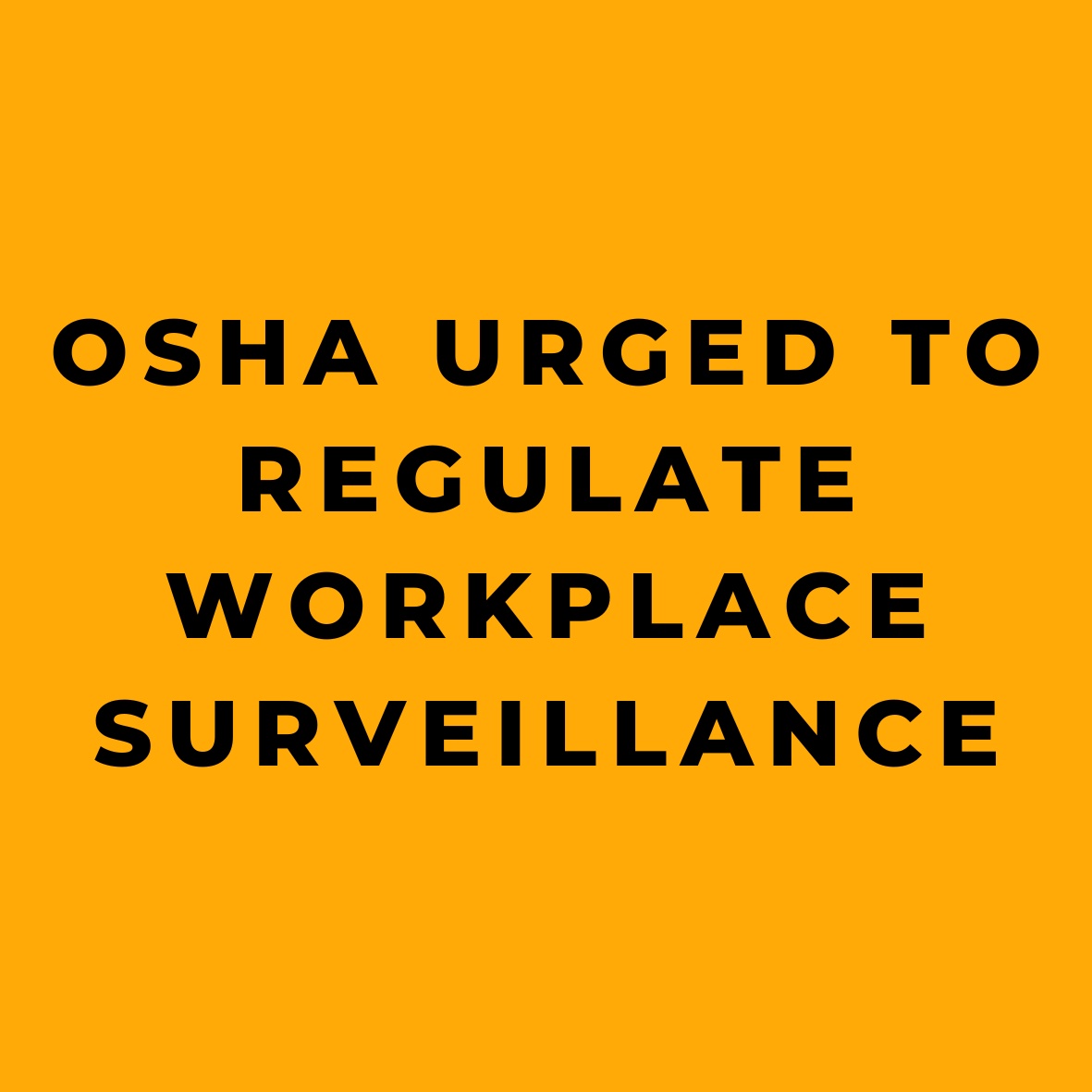Worker Rights in the Digital Age
Workplace surveillance has long been a contentious issue, but the advent of digital technology has amplified concerns over employee privacy and well-being. A growing number of advocacy groups are now urging the Biden administration to take action on this emerging front in the fight for worker rights. Governing for Impact (GFI), the Center for Democracy & Technology (CDT), and 19 other organizations have issued a letter calling for the Occupational Safety and Health Administration (OSHA) to establish regulations that address the use of electronic surveillance and algorithmic management (ESAM) in the workplace.
ESAM is defined as “a diverse set of technological tools and techniques to remotely manage workforces, relying on data collection and surveillance of workers to enable automated or semi-automated decision-making.” The proliferation of remote monitoring, gamification, and algorithmic management techniques has raised concerns about their impact on workers’ physical and mental health. These technologies can include anything from tracking employee keystrokes and location data to using digital badges and points to incentivize work performance. Advocacy groups argue that OSHA has the authority to regulate ESAM, as it directly impacts workers’ mental health and physical safety.
In their letter to the White House, GFI and CDT outlined specific policy proposals to address the issue of workplace surveillance. The letter was authored by Governing for Impact’s Reed Shaw and the Center for Democracy & Technology’s Matt Scherer. It called for the National Institute for Occupational Safety and Health (NIOSH) to fund new research into the effects of ESAM technologies on workers’ physical and mental health. Additionally, OSHA should incorporate discussions of ESAM into its sector-by-sector guidance on workplace injury prevention and issue new guidance that identifies workplace injury risks and solutions related to ESAM practices.
The groups underscored the urgency of addressing the issue, citing examples of how ESAM practices have led to detrimental consequences for workers. For instance, Amazon’s pervasive monitoring and disciplining systems have exacerbated its worker safety record, with Amazon workers suffering serious injuries at twice the rate of other warehouse workers. Furthermore, Tesla has been accused of using ESAM technologies to surveil employees and quash worker organizing efforts, leading to potential violations of federal labor.
In addition to specific examples, advocates point to more general impacts of ESAM on employees’ psychological well-being. Workers under constant surveillance report heightened stress and anxiety, a sense of powerlessness, and reduced job satisfaction. These negative effects are compounded by the use of algorithmic management systems that make automated decisions about work assignments, scheduling, and performance evaluations. Such systems can lack transparency and may perpetuate biases, leading to unfair treatment of workers. Employees are often left with limited recourse to challenge or appeal these automated decisions.
The call for action on electronic workplace surveillance extends beyond the realm of privacy and workers’ rights. It is also a matter of workplace safety. Advocates argue that surveillance technologies can lead to work intensification, increased pressure to meet performance targets, and the erosion of breaks and rest periods. The result is a higher risk of work-related injuries, fatigue, and burnout. In some cases, employees report feeling compelled to skip bathroom breaks to avoid penalties for low productivity.
Despite the challenges, some employers and managers view ESAM as a tool for enhancing efficiency and performance. They argue that data collected through surveillance technologies can be used to optimize workflows, reduce waste, and identify areas for improvement. However, critics of ESAM counter that the focus on productivity metrics and automated decision-making often comes at the expense of workers’ autonomy, dignity, and well-being.
To address these concerns, the advocacy groups have outlined several key recommendations for OSHA to consider. Firstly, they call for the establishment of clear regulations and standards that govern the use of ESAM in the workplace. Such regulations should prioritize workers’ rights to privacy, consent, and freedom from undue surveillance. Additionally, workers should have the right to access and contest data collected about them.
Secondly, the groups emphasize the need for greater transparency in the deployment of algorithmic management systems. Employers should be required to disclose the use of such systems, their intended purpose, and the decision-making criteria they employ. Transparent and accessible grievance mechanisms should also be established to allow workers to voice their concerns and seek redress.
Lastly, the groups advocate for the inclusion of workers and their representatives in the decision-making process related to workplace surveillance. Workers should have a say in how these technologies are implemented and used, as they are directly affected by their consequences.
The letter to the Biden administration marks a significant step in the ongoing dialogue surrounding workplace surveillance and algorithmic management. As technology continues to evolve and its impact on the world of work becomes more pronounced, the need for regulatory oversight and protection of workers’ rights grows ever more urgent.
In summary, the call for OSHA to regulate workplace surveillance reflects a broader push to address the challenges and opportunities presented by digital technologies. By taking proactive measures to protect workers’ privacy, mental health, and physical safety, OSHA has the potential to shape a future of work that is both innovative and humane.
References:
- https://cdt.org/insights/cdt-gfi-others-send-memos-urging-white-house-to-take-action-on-electronic-workplace-surveillance/
- https://cdt.org/wp-content/uploads/2023/04/Complete-Electronic-Workplace-Surveillance-OSHA-NIOSH-memo-package.pdf
- https://www.hrdive.com/news/advocates-call-on-osha-to-set-employee-surveillance-standard/646686/
- https://news.bloomberglaw.com/daily-labor-report/punching-in-osha-urged-to-set-standard-for-workplace-monitoring-28










